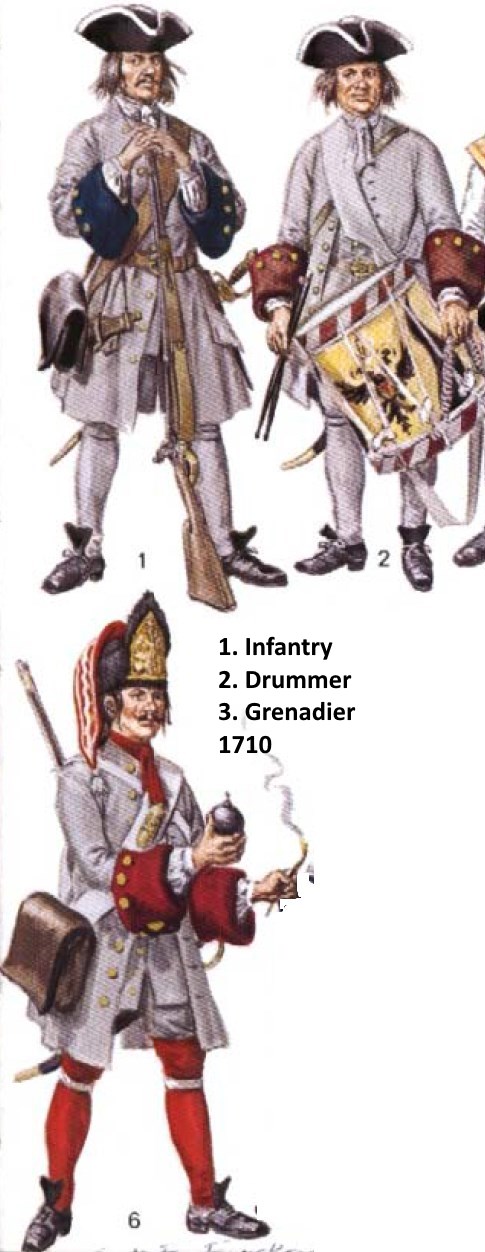The Habsburg Empire dominated Germanic central Europe at the start of the eighteenth century, dwarfing its rivals in size, population, and military might. Prussia numbered only 1.6 million persons and Bavaria 2.0 million; the Habsburg lands held 11.0 million. In the first decades of the century, Habsburg armies under the skilful command of Prince Eugene of Savoy had fought well in the War of the Spanish Succession, and the peace treaties of 1714 gave the Habsburgs the Austrian Netherlands (Belgium) and Lombardy. Wars with the Ottoman Empire at the end of the seventeenth century had acquired the Kingdom of Hungary, including vast territories in Eastern Europe. Thus, in 1714 Vienna controlled lands from Brussels in the west to Milan in the south, Belgrade in the east, and Prague in the north—plus the crown of the Holy Roman Empire. This gave the Habsburg emperor Charles VI, who reigned from 1711 to 1740, daunting political problems. The heterogeneous, polyglot realm was united only by the person of the Habsburg monarch.
The forces maintained by the Austrian Habsburgs often operated in an Imperial Army, but on an organizational level it’s better to describe the Austrian Habsburg element separately. One can say that the Austrian army was founded when after the thirty years war the emperor decided to hang on to 24,500 men even though he was at peace. This new ‘standing’ army then first came into action in the war between Sweden and Poland (1655-1660). In 1663 and 1664 it fought the Turks, and after that it took part in the ‘Guerre de Hollande’ to 1679. Together with the Poles it then got the great victory over the Turks at the siege of Vienna in 1683. The subsequent campaign against the Turks led to conquest of Hungary by which Austria became a great power. The fact that the simultaneous campaign in the west ended less well was deplorable but not as significant as the annexation of Hungary. The support for the Austrian Army
The emperor could not follow the French example in reorganising his army. Unlike the French the emperor was not able to levy taxes at will, and he was therefore highly dependent on the Stände to grant him taxes. The recent success against the Turks had been gained by the support of allies like Bavaria and Prussia, the financial support of some Stände that were afraid of the Turks, and even the financial support of rich feudal lords that commanded in the emperor’s armies. The shortages had been paid by loans and subsidies (a. o. from the church). Apart from this the Habsburg state was not a model of efficient governance. The apparatus of Hofkammer, Hofkriegsrat, Stände and even local authorities each having their say about the army did not function smoothly at all, and led to a significant loss in the already small means that were allotted to the army. Prinz Eugen would personally oversee the reform of the army’s administration during the Spanish Succession War.
The Habsburg army would thus enter the war while at a serious disadvantage in matters like provisions, equipment and above all numbers. As regards innovation it was probably not more or less modern than other armies. In command however it probably ranks first. It had the incomparable Prinz Eugen, but also men like Starhemberg and Daun, and these again had an emperor and soldiers that trusted their judgement.
The transformation and rapid growth of the Austrian monarchy’s capacity for war as judged from its army transport services in the period between the mid-1750s and 1780 was certainly impressive when compared to the situation during the War of the Spanish Succession (1701-13). Then, the Habsburg Empire’s supply system had a well-deserved reputation as `probably the worst in western Europe’.2 During the Austro-Ottoman conflict of 1714-18, Eugene of Savoy, despite his brilliance on the battlefield, struggled largely unsuccessfully against the weight of custom and long-established practice to introduce an element of cohesion and rationality into the Austrian military system. In spite of his thirty-three-year term as president of the Hofkriegsrat (Aulic War Council) between 1703 and his death in 1736, the general left a chequered legacy characterised overall by institutional stagnation or even regression, and it is generally agreed that he was a much better fighter than he was an administrator. Real progress was made only after 1749, as part of broader centralising reforms.
Eugene of Savoy, Belgrade’s temporary liberator in 1717, also acquired legendary and later mythical status in traditional European historiography. Yet if the personal qualities of an exceptional commander were on occasions crucial to success in individual campaigns and battles, more important than these exceptional individuals – who were not reproducible and unlikely to emerge more than once a century – was the strength of the underlying military systems. After Eugene’s brilliant successes against the Ottomans in back-to-back campaigns, one defensive (at Petrovaradin in 1716) and the other offensive (against Belgrade in 1717), his successors’ failure twenty years later in the anti-Ottoman wars of 1737-9 to match his record can be attributed only in part to poor leadership. The problems besetting the early-eighteenth-century Austrian army were above all organisational, linked to the inadequacy of their military planning process and the ad hoc and unreliable systems for delivery of basic supplies to the army. The failures in Austria’s military systems were cruelly exposed in the first and second Silesian wars of 1740-2 and 1744-5 respectively, which revealed unresolved problems arising from the related issues of institutional fragmentation, poor communications, and a lack of centralised planning. These resulted in serious military inefficiencies that undermined battlefield performance.
